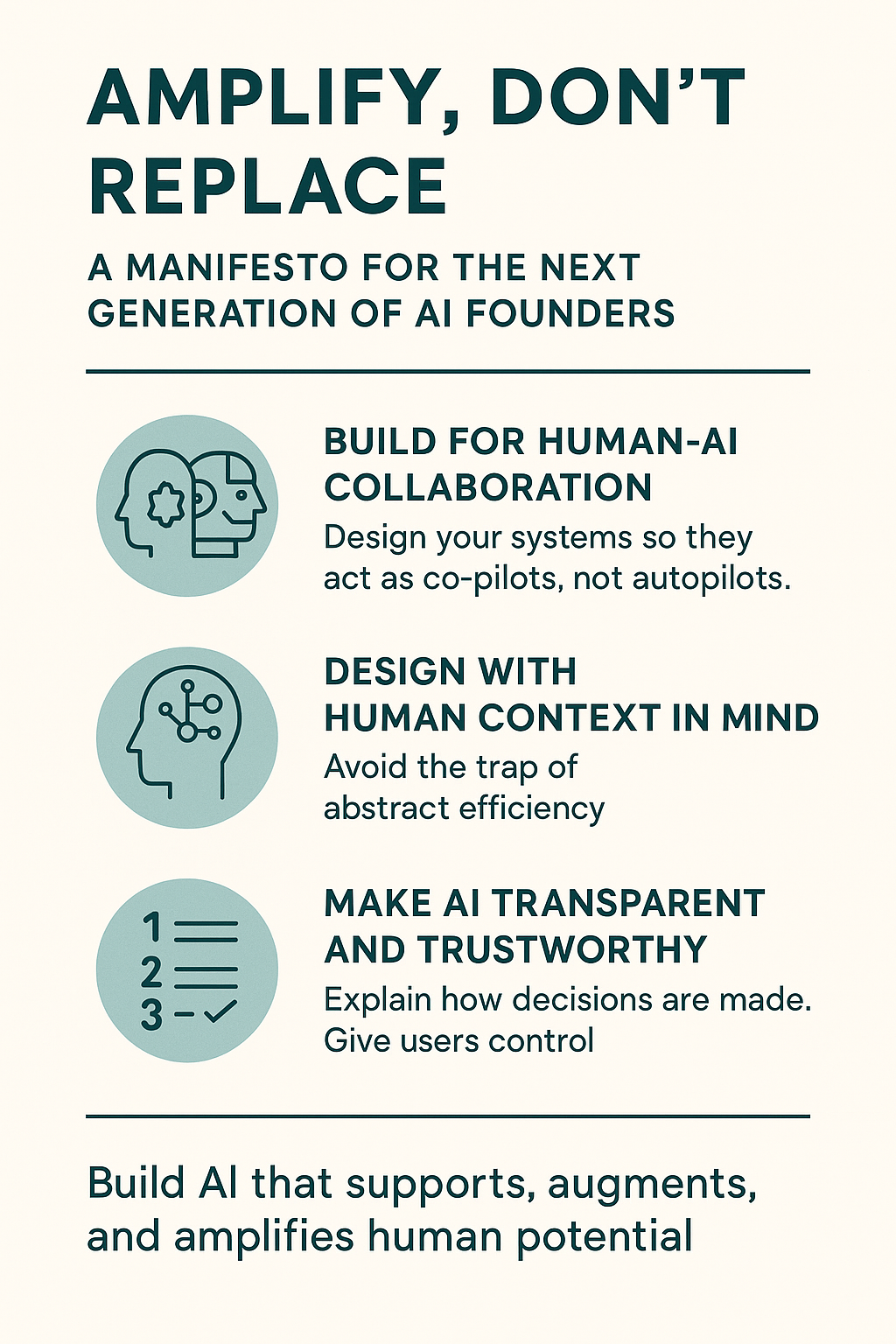Amplify, Don’t Replace: A Manifesto for the Next Generation of AI Startup Founders
In the rush to harness the transformative power of artificial intelligence, many young entrepreneurs—particularly those I have the privilege to mentor—face a question that weighs heavily on their minds: “Will my product replace people?”
This concern, though rooted in genuine ethical inquiry, often leads to unnecessary anxiety and a narrow framing of AI’s potential. As the next generation of founders, your mission should not be to disrupt for the sake of disruption, or to replace human effort with automation at all costs. Instead, your purpose should be to build AI that supports, augments, and amplifies human potential.

The Ethical Pivot Every Founder Should Embrace
We are at an inflection point in technological history. AI is no longer confined to research labs—it’s being deployed in classrooms, hospitals, manufacturing floors, and creative studios. The question is not whether AI will be part of our future, but what kind of AI will shape it.
Let me propose a simple but powerful shift in mindset: Instead of building AI to replace, build AI to elevate.
Amplification, Not Automation
Consider how Grammarly helps writers improve their communication. It doesn’t replace the writer—it makes them better. Or how Figma integrates AI to assist designers in generating layouts and variations, speeding up creativity rather than stifling it.
These are not mere productivity hacks. They are examples of AI systems that embrace collaboration—systems that become intelligent companions rather than silent competitors.
Three Principles for Founders to Follow
- Build for Human-AI Collaboration: Design your systems so they act as co-pilots, not autopilots. Let the human remain in control and in context. For instance, AI-powered diagnostic tools in medicine help doctors see patterns they might miss—but the diagnosis and patient interaction remain human decisions.
- Design with Human Context in Mind: Avoid the trap of abstract efficiency. Instead, root your solutions in the lived realities of users. Think about Duolingo’s AI: it adapts to how a person learns, shaping its feedback based on emotion, pace, and prior mistakes—not just linguistic correctness.
- Make AI Transparent and Trustworthy: Explain how decisions are made. Give users control. Tools like Notion AI allow users to see how content is generated and edit or steer it accordingly. It’s this sense of shared authorship that builds confidence and comfort with AI systems.
A New Story for AI Startups
When you pitch your idea, don’t just talk about speed or disruption. Talk about enablement. Your story should be about how your AI product helps teachers connect better with students, how it helps artists break creative blocks, how it empowers small businesses to compete with bigger ones through smarter insights—not how it cuts headcount or replaces expertise.
Closing Thoughts
Technology has always been a mirror of its makers. AI is no different. If you build it to replace humans, that’s what it will do. But if you build it to uplift humans, to extend our reach, to deepen our understanding and creativity—then that is the legacy your startup will leave.
Young founders, you are not just coding features. You are crafting futures. Let’s make sure they’re futures worth living in—together.